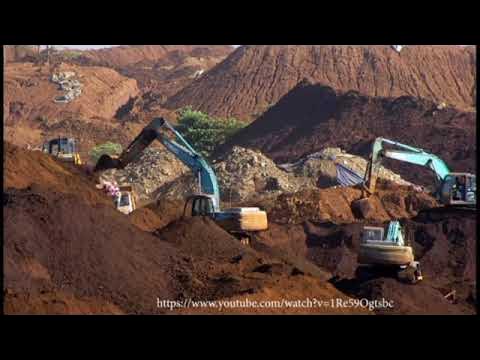Proses Singkat Pengolahan Batubara Menjadi Energi Listrik dan Pembersihan Gas Buangnya
Summary
TLDRThis video explains the process of transforming coal into electrical energy, starting from coal mining to power generation. It covers various types of coal, particularly lignite, and how it's extracted using open-pit mining methods. The script also details coal's journey to power plants, where it's crushed, mixed with air, and burned to generate heat that turns water into steam, driving turbines to produce electricity. Additionally, it discusses the environmental impact of coal power, including the treatment of harmful emissions like sulfur oxide and carbon dioxide. The video also highlights coal's role in global exports, particularly from mines in Australia.
Takeaways
- 😀 Coal is an abundant and cost-effective energy source used by many countries to produce electricity.
- 😀 Coal is categorized into four types: anthracite, bituminous, sub-bituminous, and lignite, with lignite being the lowest grade.
- 😀 North Dakota, USA, holds 25 billion tons of lignite coal, which is expected to last for 800 years.
- 😀 Lignite coal is primarily extracted through open-pit mining in North Dakota due to its location near the Earth's surface.
- 😀 The mining process involves removing topsoil and subsoil layers, followed by overburden removal to access the coal.
- 😀 Lignite coal is crushed into small pieces using heavy equipment called reapers before being transported to power plants.
- 😀 In the power plant, the coal is crushed into fine powder and burned in a boiler at temperatures exceeding 2000°C.
- 😀 The burning process generates high-pressure steam, which drives turbines connected to a generator, producing electricity.
- 😀 The flue gas produced during combustion contains harmful substances that need to be cleaned, including ash, sulfur oxides, and carbon dioxide.
- 😀 Ash is separated into fly ash and bottom ash; fly ash is collected using electrostatic precipitators and sold to cement factories.
- 😀 The sulfur oxides in the flue gas are treated to prevent acid rain, and the resulting gypsum is sold to gypsum board manufacturers.
Q & A
What are the different types of coal, and how are they classified?
-Coal is classified into four types based on its carbon content and energy potential: Anthracite (highest energy), Bituminous, Sub-bituminous, and Lignite (lowest energy).
Why is lignite coal abundant in North Dakota, USA?
-Lignite coal is abundant in North Dakota because it is found in surface layers of soil, making it easier to extract using open-pit mining methods.
What is the primary method used to mine coal in North Dakota?
-The primary method used to mine coal in North Dakota is open-pit mining, where layers of topsoil and subsoil are removed to access coal beneath the surface.
What are the main steps in the process of converting coal into electrical energy?
-The process involves crushing coal, pulverizing it into fine powder, mixing it with air and burning it in a boiler to produce steam, which drives a turbine to generate electricity.
How does the coal combustion process generate electricity?
-Coal is burned in a boiler to produce high-pressure steam. The steam drives a turbine connected to a generator, which produces electricity through the movement of a magnet within coils.
What environmental impact does coal combustion have, and how is it mitigated?
-Coal combustion produces flue gases containing harmful particles and sulfur oxides. These are treated by collecting ash, removing sulfur oxides, and using electrostatic precipitators to capture fly ash, which is used in cement production.
What is the purpose of removing sulfur oxides from flue gases?
-Sulfur oxides are removed from flue gases to prevent the formation of acid rain, which can have harmful effects on human health and the environment.
What happens to the fly ash produced during coal combustion?
-Fly ash is collected using electrostatic precipitators and is often sold to cement factories as it is a key ingredient in cement production.
Why is carbon dioxide (CO2) a significant concern in coal power generation?
-CO2 is a major greenhouse gas contributing to climate change. However, there is no economical way to capture and clean CO2 from the flue gas, making it an ongoing environmental challenge.
How does coal get from mining sites to international consumers?
-In Australia, after coal is mined, crushed, and washed, it is transported by rail to Newcastle Port, the largest coal export hub, where it is shipped to countries in Asia for use in power plants and industries.
Outlines

此内容仅限付费用户访问。 请升级后访问。
立即升级Mindmap

此内容仅限付费用户访问。 请升级后访问。
立即升级Keywords

此内容仅限付费用户访问。 请升级后访问。
立即升级Highlights

此内容仅限付费用户访问。 请升级后访问。
立即升级Transcripts

此内容仅限付费用户访问。 请升级后访问。
立即升级5.0 / 5 (0 votes)






